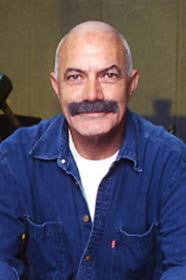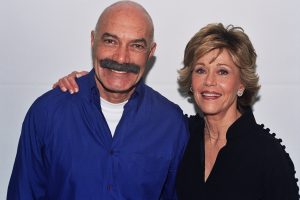Exactly tweny years ago, “Thelma & Louise,” the smash hit female buddy film sparked a huge controversy over its portrayal of the current state of male-female relationships.
The significance of the movie goes beyond its commercial appeal: “Thelma & Louise” is a movie whose themes lend themselves to provocative discussions.
Among other things, the Ridley Scott snagged the cover of Time magazine, which made it even more popular and divisive. A white-hot debate rage over whether “Thelma & Louise” celebrates liberated females and encouraged collective male bashing
Several weeks after its May 1991 opening, the movie became cult item for many women. The movie played over 20 weeks in theatrical release and did especially well in college towns. By this point, most movies that aren’t blockbusters have dropped out of sight or dropped screens, instead of adding them.
As expected, “Thelma & Louise” skewed older rather than younger viewers, particularly the 25-to-40-olds-women who were part of the women’s liberation movement, or who saw themselves as benefiting from it.
Campus newspapers were provided with various materials highlighting issues raised in the film as well as with ads encouraging students to “catch the phenomenon.” This amazing, unexpected response dictated the delayed timing of the home video release, which usually takes three to seven months.
Barbara Schneyer, owner of the women’s book store, Bread & Roses, in California’s Sherman Oaks, was one of the picture’s biggest fans. In response to the controversy it generated among her customers, she planned a “Thelma & Louise” night Friday. On the agenda: a panel discussion (including a Methodist minister and a handful of college professors) and a raffle auctioning off soundtrack cassettes and “Thelma & Louise” caps courtesy of MGM-Pathe.
People were divided about the film. Was it pro or anti-violence? Were the male characters exaggerated caricatures or true-to-life? Many female viewers noted that most women know these men: “Everyone knows her husband, and some of us are married to them.”
The movie’s box-office gross measured up to the buzz. The filmmakers said they knew that men would be challenged. “The movie isn’t safe,” said Don Barrett, senior vice-president of marketing for MGM-Pathe, “It had broken new ground.”
It is “the first movie I’ve ever seen which told the downright truth,” says Mary Lucey, a lesbian activist in Los Angeles. It is a “paean to transformative violence, an explicit fascist theme,” wrote social commentator John Leo in column in U.S. News and World Report.
Said Martha Nussbaum, a philosophy professor at Brown and an expert on women in antiquity: “I think the modern idea that women are gentle and sweet is parochial. Just look at Medea.” The Greeks, Nussbaum suggested, understood that “crimes were committed by those with the least access to power, which then, as now, included women.”
According to Miami Herald reviewer Bill Cosford, “Thelma & Louise was “a butt-kicking feminist manifesto, which sweeps you along for the ride.”
For many, it was hard to believe that the occasion for this heated controversy in moral philosophy and sexual politics was a Hollywood movie, starring two gorgeous women, Susan Sarandon and Geena Davis.
Susan Sarandon, who plays Louise, explained at the time that her character does suffer “great remorse” about the murder. “It doesn’t change the world, and in the long run it doesn’t serve to her advantage.” Indeed, fear of her act’s consequences slowly undoes her former take-charge capability. Louise gradually gives the leadership of their little expedition to Thelma, possibly because she sees that it can end only in tragedy, while Thelma can’t see anything because she is having the time of her life.
It is Thelma who spots a really cute hitchhiker (played by the young and sexy Brad Pitt) by the side of the road and decides she just has to have him. With him she has great sex for the first time in her life. He is a convenience-store bandit, and he steals all the getaway money that Louise had scraped together from her life savings.
But what might have seemed yet another rape, this time of a more symbolic kind, which turns out to be a fair exchange. The hitchhiker, using Thelma’s hair dryer as a gun substitute, teaches her the tricks of his dubious trade. Soon she is doing holdups: It is Thelma too who gets the drop on a cop who stops the two women for speeding and orders him into the trunk of his squad car. She then gently warns him to be sweet to his wife, noting, “My husband wasn’t sweet to me, and look how I turned out.”
The filmmakers claim that they were not aware of the strong responses to the picture, that “Thelma & Louise” operates its magic in unselfconscious manner, that it’s the richness of the movie’s ideas and images that makes it open to divergent and contradictory interpretation, appropriate for some, inappropriate for others.










